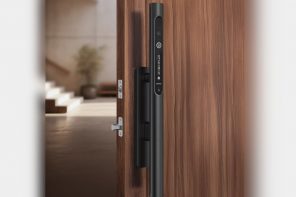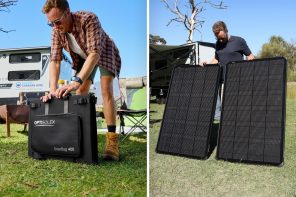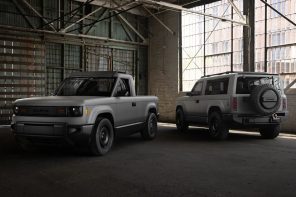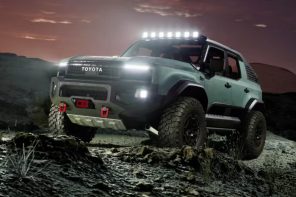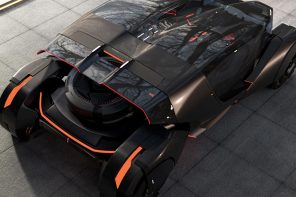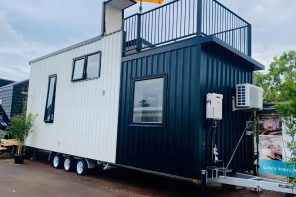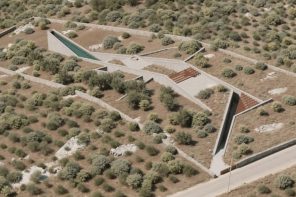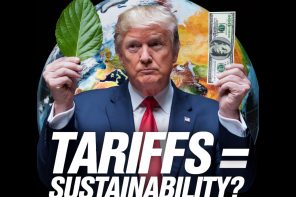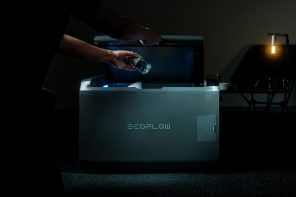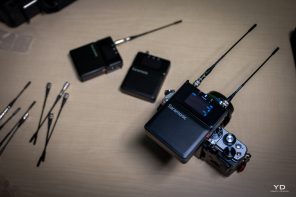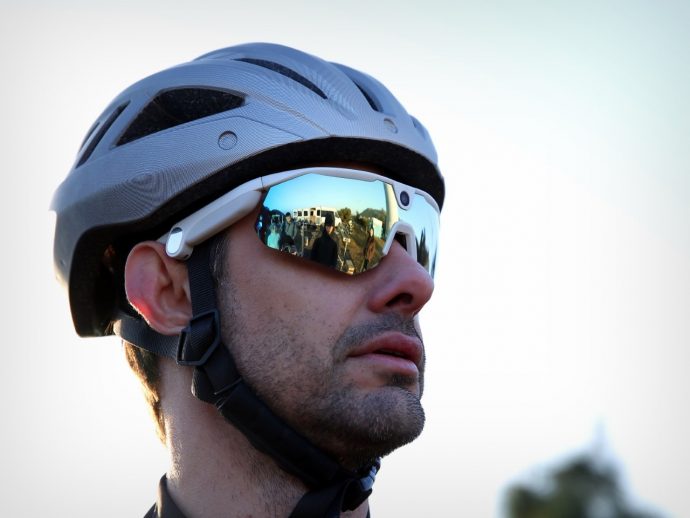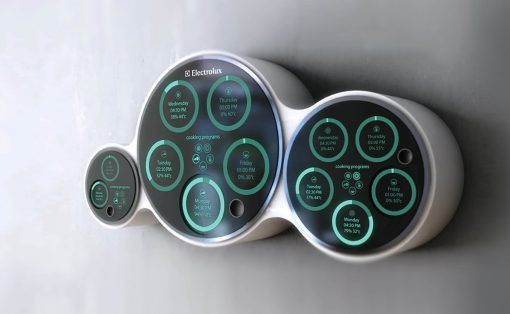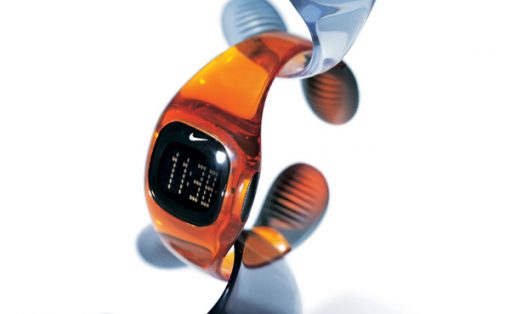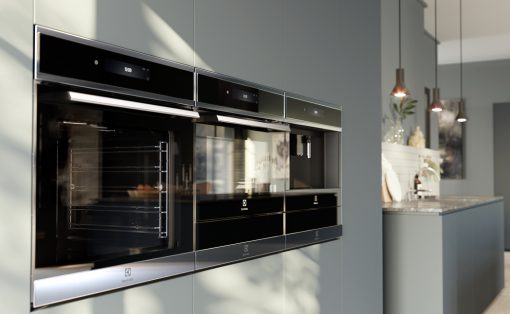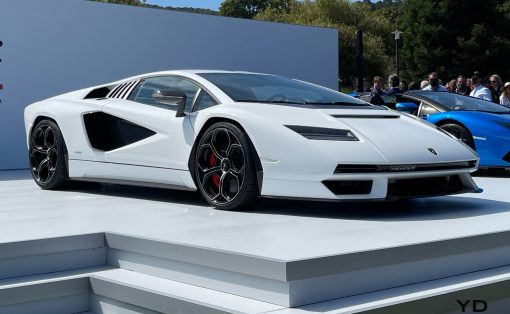For the last installment coming out of the IDSA conference, I had the opportunity to sit down and talk with Tucker Viemeister whose long list of credits in the annals of industrial and strategic design is best described by his Wikipedia entry. Presenting a “Manifesto of Industrial Design in the Post-Economic Era”, his talk highlighted the misuse of design as an engine for the economy when it should be pursued for its own end. Read on for Tucker’s perspective.
Billy May: To start out, I was doing some research and your Linked-In profile has you listed as a “post-industrial designer”. Is that a reflection of your current work in more interactive and experiential design?
Tucker Viemeister: I’ve been focusing on this idea of designing in “multi-media” instead of things, which started when I started working with Razorfish, which is a digital design place. We were seeing the whole experience, and so that’s why we call it post-industrial. That’s the future of industrial design, it’s more about the gestalt than the little pieces.
BM: What do you think has specifically drawn you towards these different technologies as you moved throughout your career? Obviously interactive software has been around for some time, but is there something that’s pushed you towards that more recently?
TV: I’ve been doing these projects with Rockwell Group that are much more about reactive environments which are very interesting to me now. There are a lot of installations where you walk by and something blinks, but I think the next step is to make it a more informative and compelling sort of experience so it’s not just a one-to-one interaction. If you walk by some flowers and they blow from your breeze, that reaction’s too normal. We’re trying to do stuff that’s more compelling and interesting for people.
BM: A lot of the projects The Lab has taken on have been design for its own sake. Like the Venice Biennale for instance, while mind-blowing, it did not have a whole lot of utility behind it. What do you think might be keeping a lot of these technologies from making that leap into consumer markets with something you might be able to pick up at Best Buy?
TV: Well, we’re exploring new territory and obviously the stuff that’s the most successful is going to make it to market for larger audiences. But who knows what that’s going to be now. I really do think that passive downloading of information like watching TV or movies is nearing its end. I think people will want things they can be involved in like games or sports. As people are forced to do less and less physical work, this other stuff is going to take its place. What can be more boring than going to the gym and riding one of those stationary bicycles? But people like it, so that kind of stuff is an area for entertainment as well as exercise.
BM: I think the Microsoft Surface Table is probably one of the most prominent examples of a lot of the reactive technology pushing into the consumer market, but even so it still kind of stands as more novelty than useful tool for living. Do you think a lot of these technologies are solutions that are still looking for problems to solve?
TV: Well, the table is an example of them pushing the research level of stuff, but I think they got bogged down in turning it into a real product. What we’re doing is stuff that’s more interesting, the hardware is unimportant; it’s what you do with the hardware. Like the GE website and the wind power plant with 3 dimensional things showing up. Its magical how it works and how it draws you into the experience. Those are the kinds of things we’re doing right now, stuff that requires very little setup.
BM: Now since around ’97, you’ve been integrally involved in the startup or creation of Frog NY, springtime USA, Razorfish, studio red and now the lab. What drives the serial entrepreneurship for you?
TV: Well part of it was just the economy, but the other part was the digital technology. The reason I went to Frog was because they had just acquired this digital design place in Austin and they were really incorporating digital interface stuff into their work and I was into that.
BM: So as your passions arose, you hopped around to places that could accommodate that?
TV: Well, I didn’t “hop” around. It was more of a straight line; it was all about the digital convergence. I was working with Frog and we were having discussions with Razorfish about merging Razorfish with Frog, but after it didn’t happen I was much more interested in working with Razorfish. After the bubble burst I started working with Springtime-USA at Rockwell and Studio Red in doing interdisciplinary work, including the digital stuff.
BM: At a lot of these places you helped bring about, you’ve held extremely senior positions, do you enjoy from that vantage point to sit back and oversee multiple projects as they go on and support those or do you like getting hands on and jumping into projects that excite you personally?
TV: I think you have certain advantages of being one of the leaders but what’s great about design is that you have both ideas and real tangible things. When you’re in design everyone puts their real stuff on the table and its right there. I think that having a real touchstone of what we do is powerful and important whether you’re talking about the big strategy or more granular tactics. It’s the specific within the broad that makes design fun.
BM: I was reading your article on Beautility and I was struck by one of your observations that an object can effect one of those transcendent “flow” moments of awareness. Do you find those moments only in appreciating a project’s final execution, as it’s done; or is it something you work to find in the process?
TV: No, you’re lucky if you find that along the way, but I think that projects have an emotional wave. Projects start off being exciting with making up concepts and stuff and then, “Oh my God”, none of these concepts are any good and the client picked the wrong one. But you have to be practical so you start making stuff and you’re like “oh, this is coming out good” and finally you present and you get the post-project let down. With industrial design, it’s weird, you’ll get a sample 5 months later and you’re like “wow this came out pretty good” and finally going in and seeing it in the store and you’re like “wow my thing is in the store!”
BM: In your talk you brought up your fathers career in industrial design. Are there any specific stories or instances that affected your development and career in industrial design?
TV: Well, there’s a lot of them I think. For me what was interesting about my dad was that on the one hand he was very decisive and regimented in his lifestyle, going to work at 8:30 and coming home at 5:30. But at the same time, his design thinking and stuff didn’t stop at work at all. Everything about our family was designish. Not necessarily like living with Philippe Stark, but more of a “Hey, you can make this better,” “Paint the room for the party, ” “You can arrange this lighting to be nicer” or “Hey, look at that cool thing”
BM: In your talk you spoke about wealth versus design, discerning which is the driver of the economy. Do you think that some of the design-for-its-own-sake can overlook some of the more pressing human problems out in the world that economic progress aims at?
TV: I think the making spinach into candy example is a good metaphor. Basically, designers should be trying to make stuff that’s good for us into stuff we want. As long as you’re doing that, you’re doing things for the betterment of humanity and your problem will be solved. And I was more referring to the whole Bruce Nussbaum in Business Week thing about making design important to business and showing how design helped businesses make more profit. Really it should be the other way around, business should be trying to help design
BM: Is that a fine line you’ve had to walk throughout your career?
TV: The point is that design helps people sell stuff and make things more appealing so business can make more money from it. But that’s not the reason to do design. The reason that business is around is not just to make money – it is to help make peoples’ lives better. For instance, there’s a company in Yellow Springs, Ohio (where I’m from) that’s in the business of not just making sensors but supporting all the people who work for them. So they’re a community of people who make these things so they can all work. They don’t go “Oh man we could make more money if we made these in China” because that’s not the reason they’re in business.
The problem with corporations is that they exist on their own without being human. And they don’t really care if they destroy the environment. They live in a different world, so we humans have to take charge of the corporations to make them act right.
BM: Do you think the economic situation might start affecting some of the deliverables we produce as far as fewer tangible products and more experiences? Has Industrial Design peaked in cultural relevance?
TV: Yeah, I think experience design and service design is leading in that direction, but I also think that the objects will be designed in that context instead of on their own. I was thinking about the hotel room this morning and how it was all designed to work together, the wall paper, the light, wall fixtures but then there’s this telephone that has nothing to do with the décor or anything, it was just stuck in there. It reminded me of historical homes built centuries ago where you say “Oh my God, look at that stove they put in this house, it doesn’t fit at all.” I think we’re going to look back on our time and say “look at those weird pieces of technology that are just sticking out like sore thumbs.
BM: My editor was actually hoping I could get you to trash talk some stuff going on in the industry. Can you relate any client horror stories or projects that put you through hell?
TV: I think the project we’re working on in Las Vegas is totally crazy for a number of reasons. Las Vegas is crazy, the economics of how things work are never as straightforward as I think they are. Because hotels in Las Vegas make most of their money on slot machines, you can’t change them at all or they’re going to lose money. Everything else is very flexible, but the slot machines are there to stay.
BM: Having heard Cooper Woodrings’ talk, and having had the positions that you’ve had, which of his seven deadly sins of design management do you think you’re occasionally guilty of?
TV: Oh my God, do you have the list? Stubborn, of all of them, stubborn was the biggest one. I think it has something to do with being unable to articulate what it is I want, so people think I’m just being stubborn. I think people also think I’m indecisive at times, but I have an excuse: design is a collaborative process and sometimes you have to say, okay that direction didn’t work and some people would think that’s indecisive. If you’re going to be experimental and successful, you have to expect a bunch of mistakes. I think one of the best things I do is to take any kind of project and figure out what’s good about it and turn it into an exciting project.

